
In the Indian Institute of Management, Bangalore’s campus, Doshi reinforced the concept of unifying diverse academic activities linked to courtyards of varied sizes. Located in Southern India, the city’s tropical, cool climate and lush greenery enabled the use of passageways filled with light and courts open to the elements. Once again, Doshi’s search for ways of arranging movement around the campus is replete with references to Indian history – to traditional architecture at Fatehpur Sikri (Agra), and the Meenakshi Temple (Madurai).
The intimacy of scale at Fatehpur Sikri, and the rhythmic sequences of light at Madurai find a reflection in the plans and sections of IIM Bangalore.



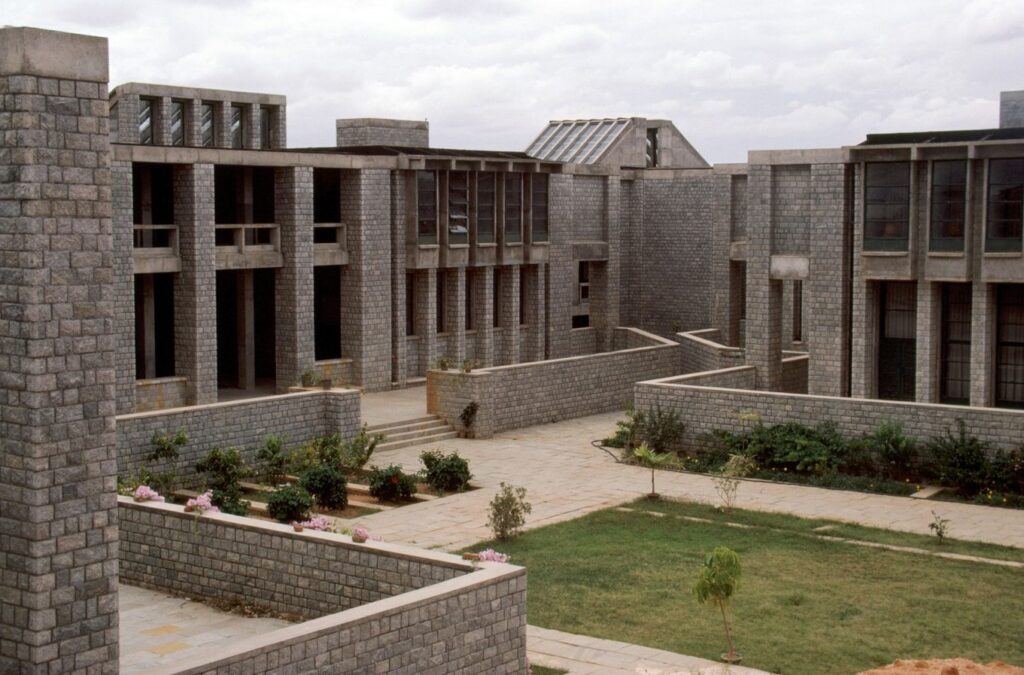
Moreover, Doshi’s interactions with academics from the Institute opened up questions of mixing spaces and blurring lines between indoor and outdoor, such that spontaneous learning could take place. This was a rather unconventional approach to entrepreneurial education in India.
Built in local stone and structural frames of concrete, the buildings disappear while the spaces and gardens in between them dominate one’s perception. The rhythmic experience of meandering through spaces, with this movement being host to various possibilities of learning, interaction and dialogue is a preoccupation visible in Doshi’s educational institutions. The constant shifting of the visual axis across the central spine, along the monumental scale is the definitive experience of IIM Bangalore. A system of concrete pergolas and trellises, now covered by creepers and overgrown vegetation, create patterned light, changing throughout the day. Over twenty years, the campus has grown and accommodated many buildings, without compromising the power of the central spine.
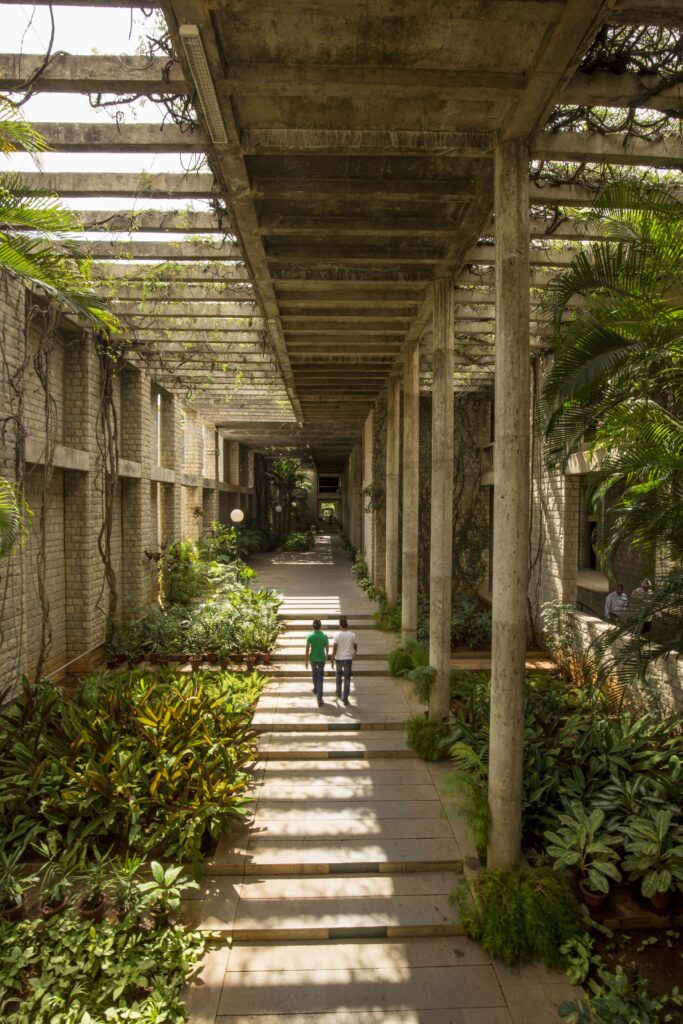
Drawings
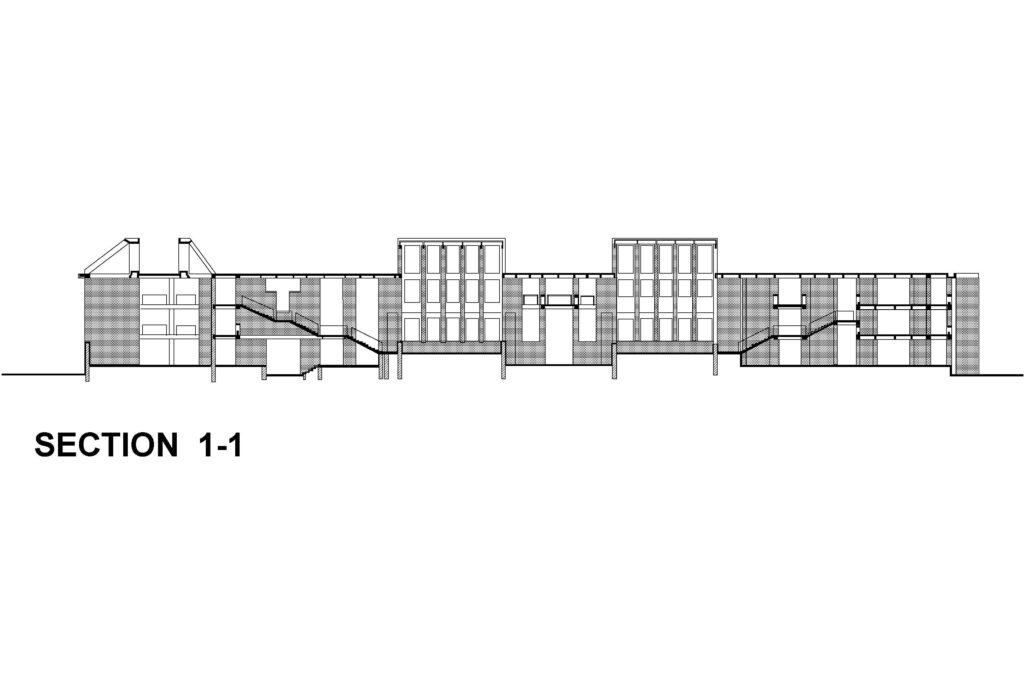
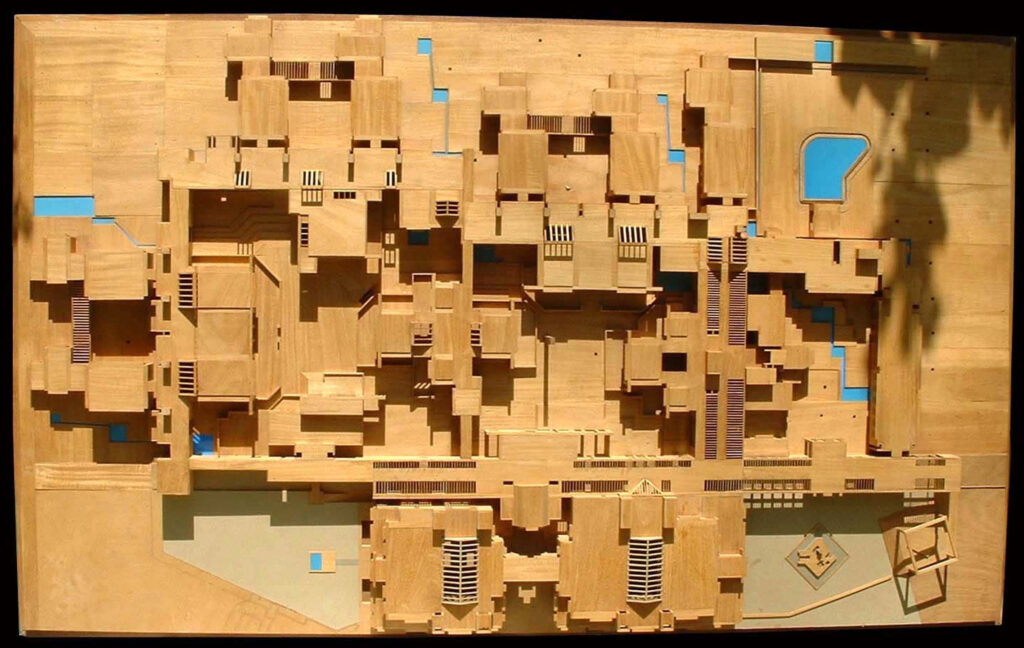

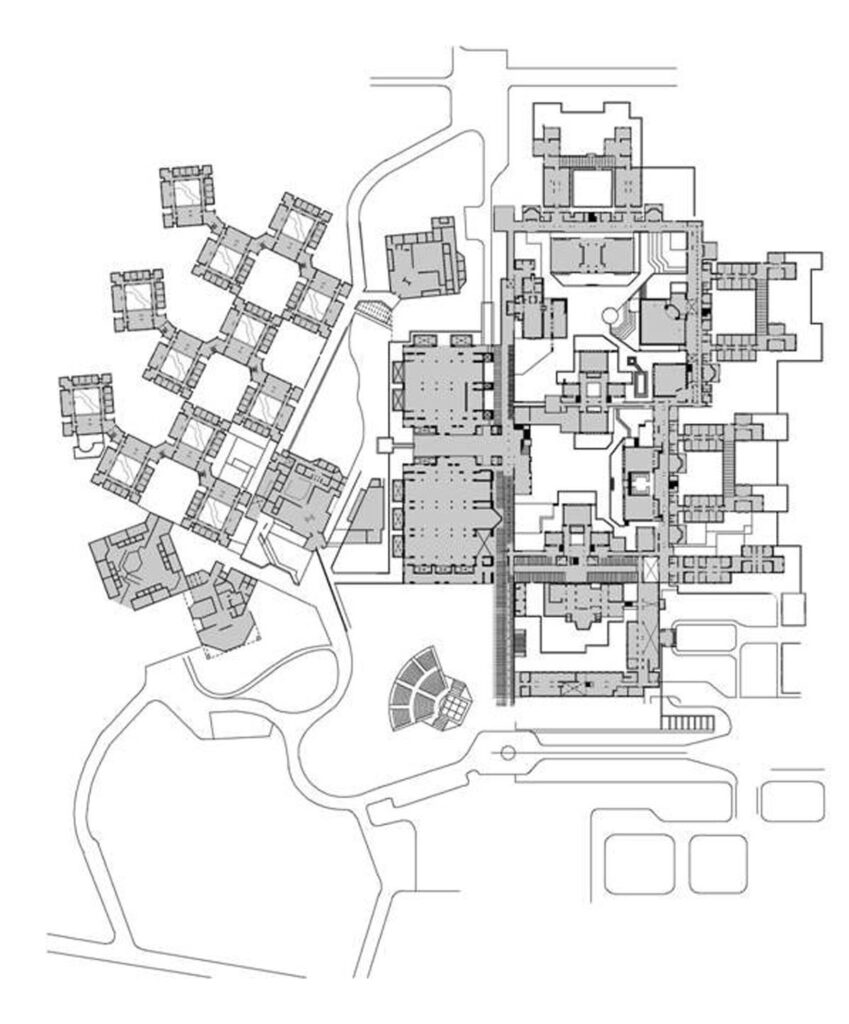
Project Details
Project: Indian Institute of Management, Bangalore
Location: Bangalore, India
Year: 1977-1992
Client: Indian Institute of Management







